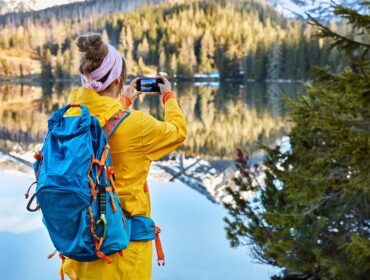 While imagery of picturesque white sand beaches alongside turquoise waters and swaying palms might be the first thing that comes to people’s minds when they think of Florida, the Sunshine State is actually comprised of rather interesting and diverse terrain. The swamps of the Everglades are another well-known feature, but one place that holds a special place in Central Floridians’ and visitors’ hearts alike is Ocala National Forest.
While imagery of picturesque white sand beaches alongside turquoise waters and swaying palms might be the first thing that comes to people’s minds when they think of Florida, the Sunshine State is actually comprised of rather interesting and diverse terrain. The swamps of the Everglades are another well-known feature, but one place that holds a special place in Central Floridians’ and visitors’ hearts alike is Ocala National Forest.
Covering just over 600 square miles of Central Florida, Ocala National Forest is the second largest nationally protected forest in the US, and the oldest national forest east of the Mississippi River. Within this forest lies the world’s highest concentration of sand pines, a type of shrubby tree that thrives in sandy, well-drained habitat that edges out competition from larger-growing species that require more soil nutrients to survive. Sand pines and other species of trees and plants that can weather the harsh conditions make up what is known as the Florida scrub, wherein nearly 100 species of plants, arthropods, and vertebrates found nowhere else in the world make their home.
But Florida scrub and sand isn’t all Ocala National Forest has to offer — more than 600 natural lakes and ponds can also be found inside its borders, as well as intermittent swamps and springs. Slow-moving rivers and highlands freshwater marshes bring much needed water to evergreen and hardwood tree hammocks, and seasonally flooded plains support plant life where no rivers run through. Wildlife lovers may be lucky enough to catch a glimpse of a Florida black bear, wild boar, white-tailed deer, American alligator, nine-banded armadillo, gopher tortoise, or North American river otter, among the region’s numerous other small animals, on their trek through the forest’s many hiking trails.
 Camping is permitted in the Ocala National Forest, with 12 campsites to choose from throughout the various regions of the forest. Four officially designated wilderness areas provide wonderful opportunities to observe flora and fauna from this part of the country that enjoy the protection of the National Wilderness Preservation System. When visiting these special areas, utmost attention should be paid to staying within marked areas and trails and leaving no trace so that all life within them remains as natural and unharmed as possible.
Camping is permitted in the Ocala National Forest, with 12 campsites to choose from throughout the various regions of the forest. Four officially designated wilderness areas provide wonderful opportunities to observe flora and fauna from this part of the country that enjoy the protection of the National Wilderness Preservation System. When visiting these special areas, utmost attention should be paid to staying within marked areas and trails and leaving no trace so that all life within them remains as natural and unharmed as possible.
If you ever happen to find yourself lamenting the lack of natural spaces in Central Florida, take a day to go explore the Ocala National Forest. Your perspective on this often unsung region will never be the same!
Images via US Forest Service – Southern Region, Kristine Paulu




